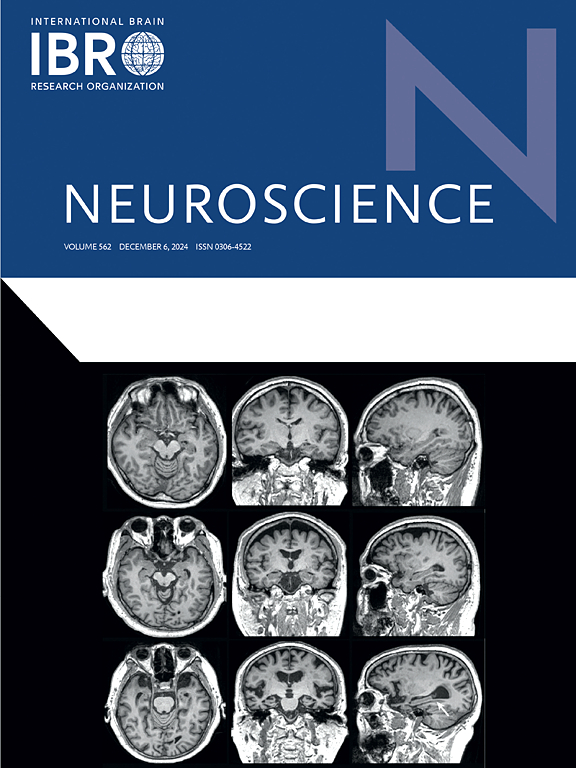Deep learning for cerebral vascular occlusion segmentation: A novel ConvNeXtV2 and GRN-integrated U-Net framework for diffusion-weighted imaging
IF 2.9
3区 医学
Q2 NEUROSCIENCES
引用次数: 0
Abstract
Cerebral vascular occlusion is a serious condition that can lead to stroke and permanent neurological damage due to insufficient oxygen and nutrients reaching brain tissue. Early diagnosis and accurate segmentation are critical for effective treatment planning. Due to its high soft tissue contrast, Magnetic Resonance Imaging (MRI) is commonly used for detecting these occlusions such as ischemic stroke. However, challenges such as low contrast, noise, and heterogeneous lesion structures in MRI images complicate manual segmentation and often lead to misinterpretations. As a result, deep learning-based Computer-Aided Diagnosis (CAD) systems are essential for faster and more accurate diagnosis and treatment methods, although they can sometimes face challenges such as high computational costs and difficulties in segmenting small or irregular lesions. This study proposes a novel U-Net architecture enhanced with ConvNeXtV2 blocks and GRN-based Multi-Layer Perceptrons (MLP) to address these challenges in cerebral vascular occlusion segmentation. This is the first application of ConvNeXtV2 in this domain. The proposed model significantly improves segmentation accuracy, even in low-contrast regions, while maintaining high computational efficiency, which is crucial for real-world clinical applications. To reduce false positives and improve overall accuracy, small lesions (≤5 pixels) were removed in the preprocessing step with the support of expert clinicians. Experimental results on the ISLES 2022 dataset showed superior performance with an Intersection over Union (IoU) of 0.8015 and a Dice coefficient of 0.8894. Comparative analyses indicate that the proposed model achieves higher segmentation accuracy than existing U-Net variants and other methods, offering a promising solution for clinical use.
用于脑血管闭塞分割的深度学习:用于扩散加权成像的新型 ConvNeXtV2 和 GRN 集成 U-Net 框架
脑血管闭塞是一种严重的疾病,由于到达脑组织的氧气和营养物质不足,可能导致中风和永久性神经损伤。早期诊断和准确的分割对有效的治疗计划至关重要。由于其高的软组织对比度,磁共振成像(MRI)通常用于检测这些闭塞,如缺血性中风。然而,MRI图像中的低对比度、噪声和异质性病变结构等挑战使人工分割复杂化,并经常导致误解。因此,基于深度学习的计算机辅助诊断(CAD)系统对于更快、更准确的诊断和治疗方法至关重要,尽管它们有时会面临诸如高计算成本和难以分割小或不规则病变等挑战。本研究提出了一种新的U-Net架构,增强了ConvNeXtV2块和基于grn的多层感知器(MLP),以解决脑血管闭塞分割中的这些挑战。这是ConvNeXtV2在该领域的首次应用。该模型即使在低对比度区域也能显著提高分割精度,同时保持较高的计算效率,这对现实世界的临床应用至关重要。为了减少假阳性并提高整体准确性,在专家临床医生的支持下,在预处理步骤中去除小病变(≤5像素)。在ISLES 2022数据集上的实验结果表明,该方法具有较好的性能,Intersection over Union (IoU)为0.8015,Dice系数为0.8894。对比分析表明,该模型比现有的U-Net变体和其他方法具有更高的分割精度,为临床应用提供了很好的解决方案。
本文章由计算机程序翻译,如有差异,请以英文原文为准。
求助全文
约1分钟内获得全文
求助全文
来源期刊

Neuroscience
医学-神经科学
CiteScore
6.20
自引率
0.00%
发文量
394
审稿时长
52 days
期刊介绍:
Neuroscience publishes papers describing the results of original research on any aspect of the scientific study of the nervous system. Any paper, however short, will be considered for publication provided that it reports significant, new and carefully confirmed findings with full experimental details.
 求助内容:
求助内容: 应助结果提醒方式:
应助结果提醒方式:


